 Joan
Miro
Joan
Miro
1893-1983
Together
with Picasso, Miro is perhaps the most versatile and influential of
20th-century artists. Although he was born into a family of craftsmen, his
father frustrated his early ambitions to become a painter, forcing him to
accept a job as a bookkeeper in Barcelona. As a result, Miro suffered a nervous
breakdown, but it only strengthened his resolve. He left for Paris in 1919,
where he met the avant-garde Surrealists.
Miro
divided his time between France and Spain, and later America, where he executed
murals for hotels and universities. His natural humour and love of anecdotal
detail quickly popularized his work; but it also has a savage and macabre
streak which was released by the shattering events of the Spanish Civil War and
World War 11. Like Picasso, Miro continued his artistic experiments into his
old age.
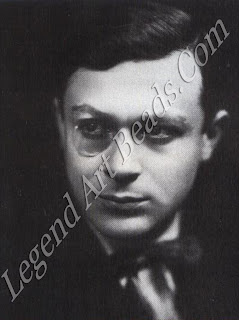 THE JOAN MIRO 'S LIFE
THE JOAN MIRO 'S LIFE
The Modest Catalan
Miro's
taciturn nature belied his profound imagination and creativity. A life of hard
work, divided between Paris and the Catalonian hills, produced unrivalled work
which continues to inspire.
Joan
Miro was born on 20 April 1893 in Barcelona. The family lived in the Pasaje del
Credito in the heart of the old city, where Miro's father Miguel ran a
prosperous business as a jeweller and watchmaker. There was artisan talent on
his mother's side too: Dolores Ferra's father was a skilful cabinet maker. From
the age of seven, Miro was sketching careful portraits and still-life, but
Dolores and Miguel constantly frustrated his artistic ambitions.
Miro
announced his intention to become a painter early on, but Miguel turned a deaf
ear in spite of his son's abysmal performance at school. Miro showed a complete
ineptitude for academic study and was known as 'fathead' by his fellow pupils.
The pattern repeated itself in 1907, when Miro enrolled at La Lonja, the
Barcelona school of Fine Arts where Picasso had studied 12 years earlier. He
was soon dubbed a 'phenomenon of clumsiness'. But his tutor could see a spark
of originality and brilliance in his clumsy attempts, and each week, when
Miguel called hoping to be assured of Miro's incompetence, he was told that one
day, Miro would be a famous artist.
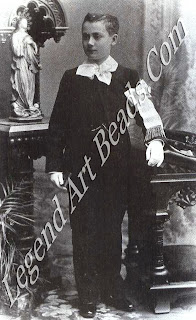 Miguel
was unimpressed and in 1910, forced his son to accept a respectable job as a
bookkeeper for a local drugstore. Miro dutifully obeyed, but it broke his
spirit. The tedium of the work and the stifling of his creative energies
brought on an appalling nervous depression, soon compounded by an attack of
typhoid fever, and in desperation his parents sent him to recuperate at their
farm near Montroig in the Catalonian hills. The surrounding landscape made a
lasting impression on the young artist.
Miguel
was unimpressed and in 1910, forced his son to accept a respectable job as a
bookkeeper for a local drugstore. Miro dutifully obeyed, but it broke his
spirit. The tedium of the work and the stifling of his creative energies
brought on an appalling nervous depression, soon compounded by an attack of
typhoid fever, and in desperation his parents sent him to recuperate at their
farm near Montroig in the Catalonian hills. The surrounding landscape made a
lasting impression on the young artist.
Once
back in Barcelona, Miro was no longer to be dissuaded from his chosen career.
He joined Francisco Gall's liberal-minded art school and associated with the
artists of the Sant Lluch some of whom became lifelong friends, like Joseph Llorens
Artigas. With his new bohemian acquaintances, Miro haunted the Barcelona cafés
and nightclubs, but he shunned their dissipated lifestyle, indulging his
fascination with the Spanish dancers only on paper. He was always the first to
go home. More rewarding were his contacts with the avant-garde French artists
and poets who travelled to Barcelona during the war years, and his discovery of
the Fauve and Cubist paintings at Joseph Dalmau's gallery.
THE LURE OF PARIS
Dalmau
offered Miro his first one-man exhibition in 1918. The public response was very
poor but the artist was undeterred, knowing that success and the international
recognition he already dreamed of could only be found in Paris. The French
capital had a magnetic appeal for him, and in 1919, when Paris was at last
safe, after the war, he made his first trip there. Over the next few years,
winters in Paris and quiet summers at Montroig became his regular working
pattern.
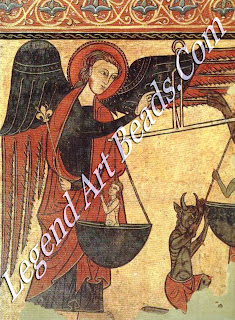 Key Dates
Key Dates
1893 born in Barcelona
1910 accepts job as a
bookkeeper
1911 suffers nervous breakdown;
determines to become a painter
1919 visits Paris and meets
Picasso
1928 trip to Holland
1929 marries Pilar Juncosa
1936 Spanish Civil War breaks
out
1940 escapes France to Palma
1942 returns to Barcelona
1944 ceramic experiments with
Artigas
1947 visits America
1956 builds large studio at
Calamayor
1970 ceramic mural for
Barcelona airport
1983 dies on Christmas Day
Paris
was a stimulating but ruthless city for obscure and impoverished artists. One
of the first things Mire did when he arrived was to look up his fellow
Spaniard, Picasso. Picasso bought a self-portrait from Miro to encourage his
new friend, but sales were hard to come by, and Mini's financial situation was
perilous. His parents provided ludicrously small sums intended to convey their
utter disapproval of his activities. The tiny studio where he worked at 45, rue
Blomet near Montparnasse had broken window panes, and his rickety stove, picked
up for 45 francs in the flea market, refused to work. He was so poor that he
could only afford one proper lunch a week.
But
there was consolation in the circle of intellectuals, poets and painters whom
Miro met through his next-door neighbour, Andre Masson. Masson, Paul Eluard,
Louis Aragon, Robert Desnos, Anton in Artaud and Andre Breton would frequently
gather to discuss the ideas which Breton set down in the first Surrealist
Manifesto of 1924. Miro was fascinated by their attempts to explore the
subconscious, often through artificially induced means, and attended the
meetings where the poet Desnos and the actor Artaud gave hysterical speeches in
states of hallucination.
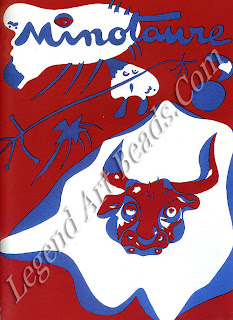 These
experiments encouraged Mire to move away from the depiction of everyday reality
in his own work, and to rely instead on his imagination and the hallucinatory
forms and sensations he experienced through extreme hunger. He would sit for
hours staring at the bare walls of his studio and sketching the strange shapes
which appeared in front of his eyes. He did not take drugs himself, and he
remained aloof from the internal squabbles of the group, but he began to
exhibit with the Surrealists, showing his new 'dream paintings' at Pierre
Loeb's gallery and the Galerie Surrealiste.
These
experiments encouraged Mire to move away from the depiction of everyday reality
in his own work, and to rely instead on his imagination and the hallucinatory
forms and sensations he experienced through extreme hunger. He would sit for
hours staring at the bare walls of his studio and sketching the strange shapes
which appeared in front of his eyes. He did not take drugs himself, and he
remained aloof from the internal squabbles of the group, but he began to
exhibit with the Surrealists, showing his new 'dream paintings' at Pierre
Loeb's gallery and the Galerie Surrealiste.
A
contract with the dealer Jacques Viot enabled him to keep afloat financially,
and Viot found him a studio in Montmartre at 22, rue Tourlaque where his new
neighbours included Max Ernst, Rene Magritte and Jean Arp. Miro struck up close
friendships with Arp and Ernst in particular, but he was rarely to be seen with
them at the Café Cyrano in Place Pigalle, or the Café de la Place Blanche where
the Surrealists gathered to discuss theories and write manifestos, or organize
exhibitions.
Miro
was working compulsively, and becoming increasingly secretive about his own
paintings. He kept them all turned face to the wall, away from the curious gaze
of Ernst, who worked in the studio above. One night Ernst and some drunken
friends stormed his studio, sorted through all the canvases to discover their
secrets, and then strung Miro up in a hangman's noose and started to squeeze
the life out of him, pulling hard on the rope. The sober Mini somehow managed
to extricate himself from the noose and went into terrified hiding for three
days.
 But
Ernst's drunken revelries never soured his friendship with Miro or their
admiration for each other, and occasionally they worked together, both agreeing
to design the costumes and scenery for Diaghilev's ballet, Romeo and Juliet.
Breton, the dogmatic leader of the Surrealist group, violently disapproved of
their involvement in what he considered to be the bourgeois and frivolous world
of ballet. He staged a demonstration in the theatre on the opening night, and
denounced them in his magazine, La Revolution Surrealiste. But Miro had never
bowed to Breton's intellectual dogmas or his authority, preferring to keep his
distance when it suited him.
But
Ernst's drunken revelries never soured his friendship with Miro or their
admiration for each other, and occasionally they worked together, both agreeing
to design the costumes and scenery for Diaghilev's ballet, Romeo and Juliet.
Breton, the dogmatic leader of the Surrealist group, violently disapproved of
their involvement in what he considered to be the bourgeois and frivolous world
of ballet. He staged a demonstration in the theatre on the opening night, and
denounced them in his magazine, La Revolution Surrealiste. But Miro had never
bowed to Breton's intellectual dogmas or his authority, preferring to keep his
distance when it suited him.
In
1928, Mini visited Holland, where the bourgeois interiors depicted by the
17th-century Dutch painters, and Vermeer in particular, intrigued him. He
brought back postcard reproductions and used them for a series of paintings,
including Dutch Interior, in which he distorted and rearranged the contents of
the originals with a great sense of humour. But soon afterwards, Miro abandoned
the easy charm of these pictures and started on a series of collages and
constructions made from bits and pieces of debris, often salvaged from dustbins;
unpleasant objects and materials put together for their shock value. He
declared that he was going to assassinate painting' which had been 'decadent
since the cave age'.
Miro's
new troubled state of mind had nothing to do with his personal fortunes. In
1929, he married Pilar Juncosa and settled down to a perfectly happy married
life. Two years later, his daughter Dolores was born. But the 1930s held
horrors in store which Miro could not disguise in his art of those years.
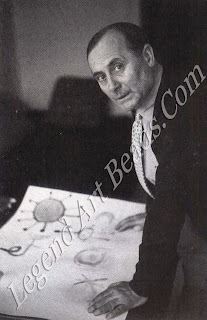 Miro
was now spending more time in Spain, increasingly alienated from the
Surrealists and their political squabbles over joining the Communist party. But
he was acutely sensitive to the threat of Fascism which was terrorizing the
people of his own country. His pictures, which he called 'peintures sauvages',
were menaced by violent distortions and aggressive monsters and a terrible
sense of impending catastrophe. Miro was anticipating war.
Miro
was now spending more time in Spain, increasingly alienated from the
Surrealists and their political squabbles over joining the Communist party. But
he was acutely sensitive to the threat of Fascism which was terrorizing the
people of his own country. His pictures, which he called 'peintures sauvages',
were menaced by violent distortions and aggressive monsters and a terrible
sense of impending catastrophe. Miro was anticipating war.
THE OUTBREAK OF CIVIL WAR
In
1936, civil war broke out in Spain, and Mini was forced to return to Paris. The
following year he designed the poster Aidez l’Espagne to be sold for one franc
to help the Spaniards in their struggle for liberty. It showed a Catalan
peasant shaking a swollen and defiant clenched fist. He also painted The Reaper
for the Spanish Republican Government, to hang next to Picasso's Guernica at
the International Exhibition in Paris, and the dramatic Still-Life with an Old
Shoe, in which an apple, symbolizing Spain, is aggressively pierced by the
bayonet-like prongs of a fork.
But
soon the problems of Spain were eclipsed by the shattering events of World War
H. Paris was no longer safe, and Miro found a temporary retreat in a small
cottage, 'Le Clos des Sansonnets', near Varengeville-sur-mer in Normandy, not
far from the house his friend Braque had built for himself a few years before.
'1 was very depressed', Miro later wrote. 'I believed in an inevitable victory
for Nazism and that all that we love and that gives us our reason for living
was sunk forever in the abyss.' Only a few months later, German bombardments
threatened Varengeville and Miro was on the run once more, heading south
through Paris and arriving in Spain just a few days before the Germans marched
into the French capital.
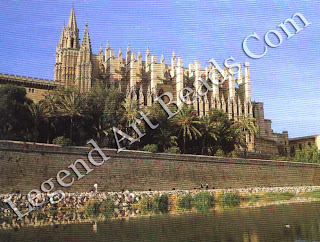
Miro
settled temporarily in Majorca, finding some respite in peaceful hours spent at
the cathedral of Palma, listening to organ recitals and watching the soft light
filtering through the stained-glass windows. In 1942, he took his family back
to Barcelona. His lasting anger at the senseless ravages of war surfaced in
some horrifying lithographs The Barcelona Suite but he also found a vital
creative outlet in ceramic experiments with his childhood friend, Artigas.
By now
his international reputation had grown, particularly in America where his work
was shown regularly at the Pierre Matisse gallery. He made the first of many
trips to America in 1947, invited by the Directors of the Terrace Hilton Hotel
in Cincinnati to paint an enormous mural for their Gourmet Restaurant. This
coincided perfectly with a new desire to communicate with the public and
express himself on a huge scale.
Miro
also visited New York, where the exciting pace of the city and the youthful
optimism of the people gave him a new lease of life and a desire to pick up
with old friends, ending a long period of introspection and detachment. On his
return to Paris in 1948, after eight years' absence, he was given a hero's
welcome and an exhibition of his work at the Galerie Maeght was a resounding
commercial success.
Miro
was soon weighed under with monumental commissions from the Americans, the
French and the Spanish, including paintings and ceramic murals for Harvard
University, the Solomon R. Guggenheim Museum, the ceramic Wall of the Sun and
Wall of the Moon for Unesco, Paris, a large monument for the Cervantes Gardens
in Barcelona and, as late as 1970, an enormous ceramic mural for display at
Barcelona airport.
To work
more effectively for the public, Miro increasingly devoted his energies to
lithographs, engravings, etchings and popular crafts ceramic vases and dishes,
for example all of which were much cheaper than easel paintings and could be
widely disseminated. In 1954, he was awarded the Venice Biennale Grand Prize
for engraving, and from the hands of President Eisenhower he received the Grand
International Prize of the Guggenheim Foundation.
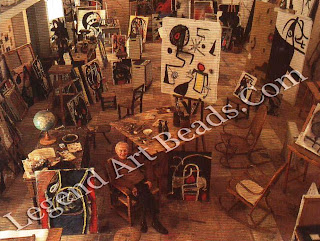 THE FOUNDATION MAEGHT
THE FOUNDATION MAEGHT
To cope
with the flood of commissions and the time-consuming organization of regular
world-wide exhibitions, the Foundation Maeght was set up in his honour at St
Paul de Vence in 1964 Ceaselessly energetic, Miro spent the last two decades of
his life rushing from Montroig to his printers in Paris, back to Artigas's
kilns in the mountains of Gallifa, and, if he needed to work alone, to the
enormous studio specially built for him by Jose Luis Sert among the terraces
and olive trees of Calamayor neat Palma. This was the only large studio he had
ever owned, but of which he had always dreamed while working in the cramped
conditions of his Paris studios and his tiny room in the Pasaje del Credito,
where he remembered banging his head against the walls when things got too much
for him.
Right
up until his death on 25 December 1983, Miro worked exhaustively, learning the
techniques of monotype when he was 84, and at 86 producing his first
stained-glass windows for the Foundation Maeght. But with an output and a
reputation rivalled only by that of Picasso, the frail, modest old man remained
undazzled by his glory to the end.
Writer
– Marshall Cavendish
 Miguel
was unimpressed and in 1910, forced his son to accept a respectable job as a
bookkeeper for a local drugstore. Miro dutifully obeyed, but it broke his
spirit. The tedium of the work and the stifling of his creative energies
brought on an appalling nervous depression, soon compounded by an attack of
typhoid fever, and in desperation his parents sent him to recuperate at their
farm near Montroig in the Catalonian hills. The surrounding landscape made a
lasting impression on the young artist.
Miguel
was unimpressed and in 1910, forced his son to accept a respectable job as a
bookkeeper for a local drugstore. Miro dutifully obeyed, but it broke his
spirit. The tedium of the work and the stifling of his creative energies
brought on an appalling nervous depression, soon compounded by an attack of
typhoid fever, and in desperation his parents sent him to recuperate at their
farm near Montroig in the Catalonian hills. The surrounding landscape made a
lasting impression on the young artist.  These
experiments encouraged Mire to move away from the depiction of everyday reality
in his own work, and to rely instead on his imagination and the hallucinatory
forms and sensations he experienced through extreme hunger. He would sit for
hours staring at the bare walls of his studio and sketching the strange shapes
which appeared in front of his eyes. He did not take drugs himself, and he
remained aloof from the internal squabbles of the group, but he began to
exhibit with the Surrealists, showing his new 'dream paintings' at Pierre
Loeb's gallery and the Galerie Surrealiste.
These
experiments encouraged Mire to move away from the depiction of everyday reality
in his own work, and to rely instead on his imagination and the hallucinatory
forms and sensations he experienced through extreme hunger. He would sit for
hours staring at the bare walls of his studio and sketching the strange shapes
which appeared in front of his eyes. He did not take drugs himself, and he
remained aloof from the internal squabbles of the group, but he began to
exhibit with the Surrealists, showing his new 'dream paintings' at Pierre
Loeb's gallery and the Galerie Surrealiste.  But
Ernst's drunken revelries never soured his friendship with Miro or their
admiration for each other, and occasionally they worked together, both agreeing
to design the costumes and scenery for Diaghilev's ballet, Romeo and Juliet.
Breton, the dogmatic leader of the Surrealist group, violently disapproved of
their involvement in what he considered to be the bourgeois and frivolous world
of ballet. He staged a demonstration in the theatre on the opening night, and
denounced them in his magazine, La Revolution Surrealiste. But Miro had never
bowed to Breton's intellectual dogmas or his authority, preferring to keep his
distance when it suited him.
But
Ernst's drunken revelries never soured his friendship with Miro or their
admiration for each other, and occasionally they worked together, both agreeing
to design the costumes and scenery for Diaghilev's ballet, Romeo and Juliet.
Breton, the dogmatic leader of the Surrealist group, violently disapproved of
their involvement in what he considered to be the bourgeois and frivolous world
of ballet. He staged a demonstration in the theatre on the opening night, and
denounced them in his magazine, La Revolution Surrealiste. But Miro had never
bowed to Breton's intellectual dogmas or his authority, preferring to keep his
distance when it suited him.  Miro
was now spending more time in Spain, increasingly alienated from the
Surrealists and their political squabbles over joining the Communist party. But
he was acutely sensitive to the threat of Fascism which was terrorizing the
people of his own country. His pictures, which he called 'peintures sauvages',
were menaced by violent distortions and aggressive monsters and a terrible
sense of impending catastrophe. Miro was anticipating war.
Miro
was now spending more time in Spain, increasingly alienated from the
Surrealists and their political squabbles over joining the Communist party. But
he was acutely sensitive to the threat of Fascism which was terrorizing the
people of his own country. His pictures, which he called 'peintures sauvages',
were menaced by violent distortions and aggressive monsters and a terrible
sense of impending catastrophe. Miro was anticipating war. 















0 Response to "The Great Artist Joan Miro"
Post a Comment